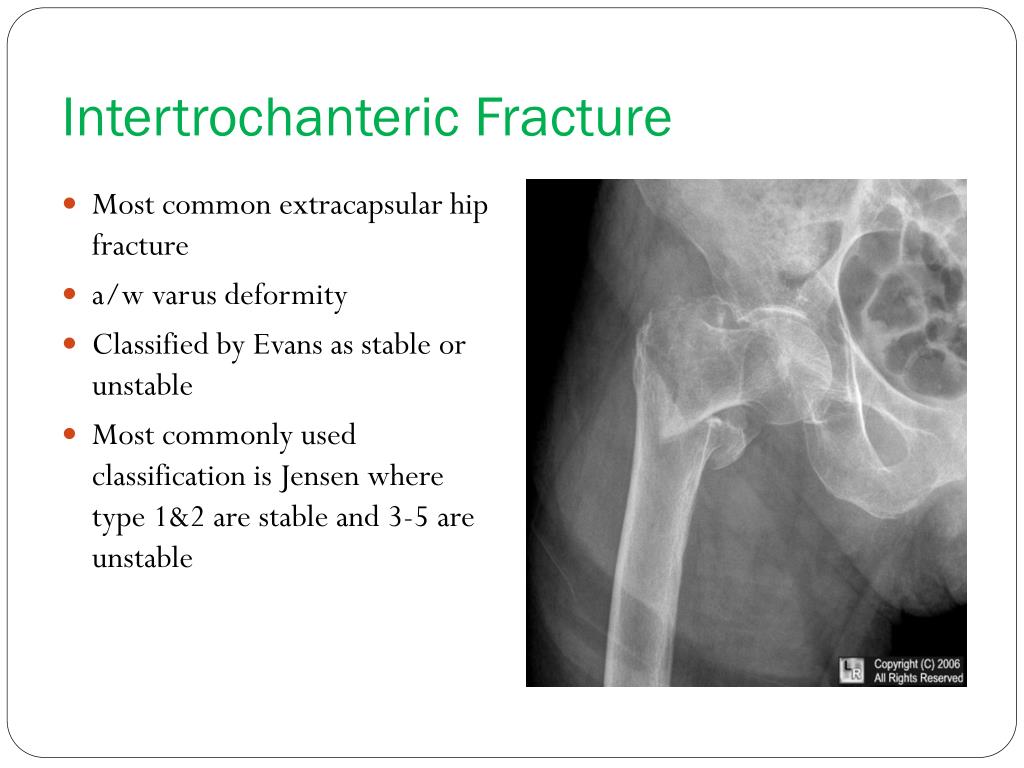

Clinical Evaluationīy the time the orthopaedic surgery team has been consulted, the diagnosis of a hip fracture often has already been determined. This review covers the relevant background, anatomy, and treatment considerations essential for an orthopaedic practitioner to optimize management of these common and significant injuries. The goal of treatment in these fractures is early medical optimization and surgical stabilization to allow for quicker mobilization and recovery.īecause hip fractures are so common, the extent of complex decision making and management often is underappreciated in this diverse group of fractures. In other words, people who are otherwise healthy do not often fall from ground level and break their hip. It can be an indicator of systemic disease as well. It is important to keep in mind that the diagnosis of a low-energy hip fracture is more than just an orthopaedic diagnosis. Hip fractures carry a 20% to 30% 1-year mortality rate in elderly patients therefore carefully integrated care with a multidisciplinary approach is essential to improve outcomes.

In addition to the increase in hip fracture incidence over time, the diagnosis carries with it significant morbidity and mortality.

Management of hip fractures cost roughly $20 billion in 2010, and this diagnosis is consistently one of Medicare’s top expenses. Hip fractures are one of the most common major orthopaedic injuries in the United States, with an incidence of 1.66 million worldwide in 1999, projected to rise above 6 million per year in 2050. Proper diagnosis is an essential first step in understanding treatment options because they vary regionally along the «hip». The fractures referred to in this anatomic region are classically divided into femoral neck (FN), intertrochanteric (IT), and subtrochanteric (ST) fractures, from proximal to distal, respectively. Acetabular fractures are not usually included in this terminology despite being a part of the hip joint and have separate diagnostic and treatment considerations. The term «hip fracture» is a misnomer that is often used to refer to any fracture of the proximal femur extending from the distal extent of the femoral head to the proximal aspect of the femoral shaft. In this review, the relevant background, anatomy, and current treatment considerations essential to optimize management of these common and significant injuries are discussed. The extent of complex decision-making and management is often underappreciated in this diverse group of fractures. Orthopaedists must be able to carefully distinguish between femoral neck, intertrochanteric, and subtrochanteric femoral fractures because diagnosis is essential in guiding treatment. These fractures vary significantly in anatomy, pathogenesis, and treatment. Hip fractures are one of the most common major orthopaedic injuries in the United States, with an incidence that is growing with the aging population. Hip Fractures: Current Review of Treatment and Managementĭaniel C. GEOPS (Grupo de Estudio de la Osteoporosis).Sesiones Clínicas Interhospitalarias Online SOGACOT.


 0 kommentar(er)
0 kommentar(er)
